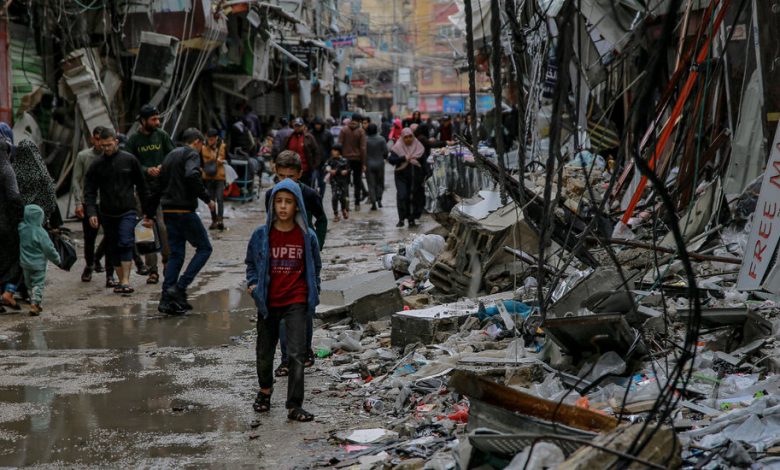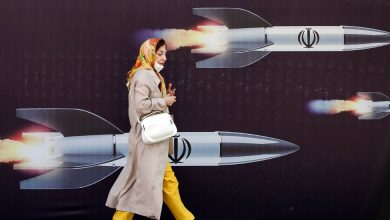Hamas and Israel Extend Cease-Fire for 2 Days, Qatar Says

Israel and Hamas agreed on Monday to extend by two days a cease-fire that has brought a measure of calm to the Gaza Strip after seven weeks of intense warfare, the Qatari government said. The two sides struck a deal to exchange more hostages and prisoners and allow more aid into the beleaguered territory.
On the final evening of the initial four-day truce agreement, Hamas released 11 Israelis, including 3-year-old twins and their mother, and Israel provided to Hamas a list of 33 Palestinian prisoners it planned to set free later Monday night, keeping to the three-to-one ratio they have observed so far.
The lengthened respite in fighting raised hopes in Washington that the trajectory of the conflict could bend toward the release of additional captives as well as more humanitarian aid for Gaza, where thousands of civilians have been killed and conditions are desperate for the living.
John F. Kirby, a White House spokesman for the National Security Council, welcomed the lengthened pause in fighting and said the United States would like to see it “extended further until all the hostages are released.”
António Guterres, the secretary-general of the United Nations, told reporters at U.N. headquarters in New York that the extension was “a glimpse of hope and humanity in the middle of the darkness of war.”
The deal came after an Israeli offer to continue the cease-fire by one day for every additional 10 hostages released, who would be exchanged for 30 Palestinians in Israeli prisons.
The Israeli hostages released on Monday were three women and eight children, all of them kidnapped from Kibbutz Nir Oz during the Hamas-led assault on Israel on Oct. 7, when more than 200 people were seized and taken to Gaza.
They included Sharon Alony Cunio, 34, and her twin 3-year-old daughters, Emma and Yuli Cunio, three of the six members of their family who were taken hostage. David Cunio, the twins’ father and Ms. Cunio’s husband, is believed to still be in Gaza. Her sister and niece were released on Friday.
The French government said three of those released on Monday were dual Israeli-French citizens. A number of those kidnapped have dual nationalities, including about 10 Israeli-Americans, of whom only one, a 4-year-old girl, has been released.
Hamas said it had received a list of three women and 30 minors that Israel would release in return on Monday.
The exchanges so far have focused on Israeli and Palestinian women and minors. Dozens of Israeli soldiers as well as civilian Israeli men in their 70s and 80s are still being held captive in Gaza. In several cases, children have been released without their fathers, and wives without their husbands.
Family separations have been a stumbling block in the hostage negotiations.
Israeli officials have expressed concerns to Qatari mediators that some children were being released without mothers who were also being held captive, running counter to the agreement, according to an official briefed on the talks. The official said Hamas has said that in those cases, the mothers are being held by different groups, and it would take time to get them.
The swap of hostages and prisoners is being negotiated by the government of Qatar, where many of Hamas’s political leaders live, and which has long acted as an intermediary for nations that refuse to deal directly with Hamas.
In Egypt, which is also helping mediate the talks, Diaa Rashwan, the head of the State Information Service, said Monday that the extension of the cease-fire would also allow for more medicine, food and fuel into Gaza as well as continued restrictions on Israeli flights over the territory.
Since Friday, Hamas has released 50 Israeli hostages and Israel has freed 150 Palestinian prisoners. Nineteen other hostages in Gaza — 17 Thais, one Filipino and one Russian-Israeli dual citizen — have been released since Friday through separate negotiations.
The number of women and children still being held in Gaza is unclear. The cease-fire deal initially included the release of 50 women and children because that was the number Hamas had been able to locate, the prime minister of Qatar, Sheikh Mohammed bin Abdulrahman al-Thani, told The Financial Times in an interview published on Sunday.
More than 40 women and children were being held hostage by groups other than Hamas, Mr. al-Thani said, adding that Israel was willing to extend the cease-fire if “there’s proof” that Hamas has more women and children to release.
The deal appeared to be in some doubt on Monday, as each side took issue with the list of people the other had slated for release, but that dispute was resolved, according to the official briefed on the negotiations.
The cease-fire has marked the first extended break in the violence since the Oct. 7 attack by Hamas gunmen and other militant groups killed an estimated 1,200 people in Israel. Health officials in Hamas-controlled Gaza say more than 13,000 people have been killed during the Israeli military response, which has included airstrikes and a ground invasion that has encircled Gaza City.
Israel’s prime minister, Benjamin Netanyahu, had expressed openness to an extension of the truce, but made clear that he intended for Israel to resume fighting after it ends. He reiterated the goal of eliminating Hamas.
After nearly 50 days of Israeli bombardment, Gaza residents cautiously welcomed the respite in fighting.
When the skies over Gaza went silent on Friday, many in the enclave raced to check on family members and homes they had not seen since the fighting began. Others seized on the chance to get a night of uninterrupted sleep, stock up on supplies or take a dip in the Mediterranean Sea.
“During the truce, we felt like we began to gradually get our lives back,” said Mohammad al-Akhras, a 35-year-old freelance photojournalist from Gaza City who had been separated from his family for 45 days. On Friday he rushed to see his wife and children.
The pause allowed Dareen Nseir, 46, to journey back to her house in Gaza City. She hadn’t been back since fleeing to another neighborhood in the city soon after the Israeli bombardments began. She was able to salvage some clothes for her grandchildren, she said, but nothing else.
“I wished that I was going back home permanently,” Ms. Nseir said. “But our windows were broken and the walls have been shelled.”
Despite chilly weather, dozens of families flocked to the beaches of southern Gaza over the weekend. Children splashed around in the water and played in the sand while fishermen cast their nets into the sea — a fleeting return to normality after weeks of fighting.
Hundreds of trucks carrying aid have crossed into the battered enclave since the cease-fire went into effect — a sharp increase from the meager supplies allowed in earlier in the war, but still far short of the normal flow, and far short of what is needed, humanitarian groups say.
Ms. Nseir said she still could not find food or cooking gas for her family.
“They told us that aid would flow in,” she said. “We received nothing.”
Talya Minsberg reported from Tel Aviv, Yara Bayoumy from Jerusalem and Vivian Yee from Cairo. Reporting was contributed by Thomas Fuller, Isabel Kershner, Iyad Abuheweila, Erica L. Green Hiba Yazbek, Abu Bakr Bashir, Peter Baker Edward Wong, Farnaz Fassihi and Gabby Sobelman.



